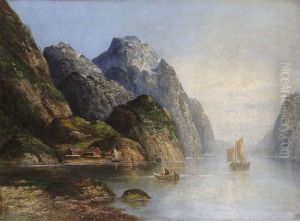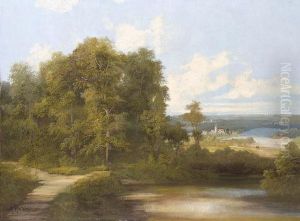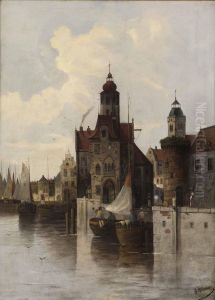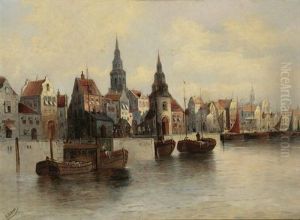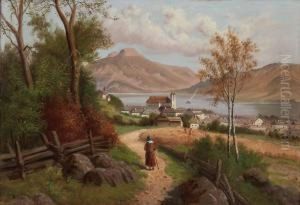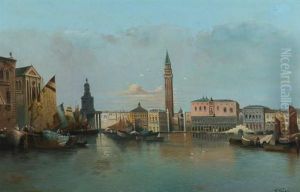Anton Hubner Paintings
Anton Hübner was a 19th-century German artist known for his historical paintings and portraits. Born on May 8, 1813, in Königsbrunn, Bavaria, Hübner exhibited a talent for the arts at an early age. He pursued his artistic education at the Academy of Fine Arts Munich, where he was influenced by the works of Peter von Cornelius and other German Romantic painters.
After completing his studies, Hübner traveled extensively throughout Europe, including stays in Italy and Belgium. These travels exposed him to a variety of artistic styles and techniques which would later inform his own work. In Italy, he was particularly impressed by the Renaissance masters, and their influence can be seen in his approach to composition and his handling of the human figure.
Hübner's historical paintings often depicted moments from German and European history, characterized by dramatic intensity and a meticulous attention to detail. He sought to capture the grandeur and pathos of historical events, and his works were well received for their narrative power and technical proficiency. In addition to his historical scenes, Hübner also painted portraits of notable figures of his time, which were praised for their lifelike representation and psychological depth.
Throughout his career, Hübner enjoyed considerable success and was commissioned to create works for various patrons, including members of the nobility and the church. He became a respected figure in the German art world and was involved in several art organizations, where he helped to shape the future of art education in the country.
Anton Hübner's legacy is that of a skilled painter who bridged the gap between Romanticism and the emerging Realist movement. His works are held in numerous collections and continue to be studied for their contribution to 19th-century German art. Hübner passed away on February 14, 1879, in Berlin, leaving behind a body of work that continues to be appreciated for its historical significance and artistic merit.
